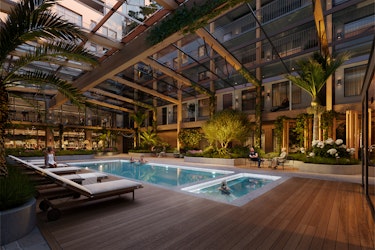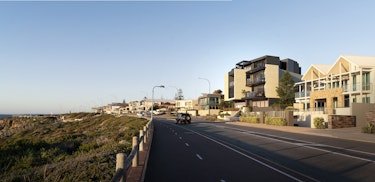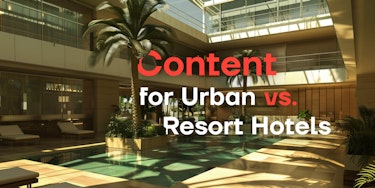The distinction between urban and resort hotels is more than just a difference in location. These types of properties cater to unique cultural contexts, target diverse audiences, evoke different emotional atmospheres, and employ varied marketing strategies. Recognizing and effectively addressing these differences is essential for creating compelling content that resonates with the intended audience.
In this article, we will explore the key differences between urban and resort hotels in terms of cultural influences, target audiences, emotional atmospheres, and marketing strategies. By delving into these aspects, we aim to provide a clear understanding of how to create content that effectively highlights the unique qualities of each type of property. This comprehensive approach not only enhances the guest experience but also strengthens the hotel's brand and market positioning.
1. Cultural Influences
Understanding the cultural context in which urban and resort hotels operate is crucial for creating content that resonates with their guests.
Urban hotels are often located in bustling cities with rich, multicultural landscapes. Their content reflects this diversity, emphasizing a sophisticated, cosmopolitan vibe. For instance, an urban hotel in New York might highlight its proximity to cultural landmarks, vibrant nightlife, and business districts, using a blend of contemporary and cosmopolitan visuals. This type of content not only appeals to international travellers but also reflects the city's fast-paced lifestyle and its appeal to a global audience.
In contrast, resort hotels are typically nestled in serene, picturesque settings that embody the local culture and traditions. The accents in resort hotel content are relaxed, emphasizing leisure and natural beauty. A resort in Bali, for example, would focus on serene beach scenes, traditional Balinese architecture, and wellness activities like yoga and spa treatments. The content created for resort hotels would thus be imbued with a sense of peace and escape, reflecting the local charm and slower pace of life. This approach not only highlights the unique aspects of the resort’s location but also enhances the guest's connection to the local culture, making their stay more memorable.

2. Audience Profiles
The target audience for urban and resort hotels varies, requiring tailored content accents to attract each demographic effectively.
Urban hotels cater to a mix of business travellers, tourists, and city dwellers looking for short getaways. Their content needs to appeal to a professional and dynamic audience, emphasizing convenience and connectivity. Features such as state-of-the-art conference facilities, and proximity to corporate hubs are highlighted. Additionally, urban hotels often attract millennials and young professionals who value modern amenities and the convenience of being in the city centre. By highlighting these features, urban hotels can attract a clientele that is looking for efficiency, connectivity, and the excitement of city life.
Resort hotels primarily attract vacationers seeking relaxation and recreation. This audience includes families, couples on romantic getaways, and individuals looking for a peaceful escape. Content accents for these guests should evoke feelings of tranquillity and enjoyment. Visuals might include family-friendly activities, romantic sunset dinners, and luxurious spa services. Furthermore, resorts often attract older demographics who are looking for a break and want to indulge in comfort and relaxation. By focusing on these aspects, resort hotels can attract a clientele that values tranquillity, nature, and the opportunity to recharge in a beautiful setting.

3. Emotional Resonance
The emotional atmosphere conveyed by the content of urban and resort hotels plays a crucial role in shaping guest perceptions and experiences.
Urban hotel content often evokes emotions of excitement, ambition, and adventure. The vibrancy and energy of city life, the thrill of discovering new urban landscapes, and the convenience of having everything within reach are central themes. For example, showcasing a city's nightlife, cultural hotspots, and unique architectural features can appeal to travellers seeking new experiences and adventures. This approach not only highlights the exciting aspects of urban life but also positions the hotel as a gateway to the city's most thrilling experiences.
In contrast, resort hotel content aims to evoke a sense of calm, peace, and indulgence. The focus is on slowing down, savouring the moment, and reconnecting with nature and oneself. Imagery of tranquil beaches, soothing spa experiences, and serene natural surroundings help create an atmosphere of relaxation. By highlighting activities such as yoga, meditation, and nature walks, resort hotels can attract guests looking for a holistic and rejuvenating experience. This approach not only showcases the resort's amenities but also appeals to the emotional needs of their target audience.

4. Promotional Approaches
Effective marketing strategies for urban and resort hotels leverage these content accents to attract their respective audiences.
Urban hotels benefit from marketing strategies that emphasize convenience, connectivity, and the vibrant urban lifestyle. This includes showcasing nearby attractions, promoting special events, and highlighting business amenities. For instance, a marketing campaign might feature a hotel's proximity to major business districts, top-rated restaurants, and entertainment venues. Additionally, offering packages that include tickets to local events or transportation options can enhance the appeal. By focusing on these aspects, urban hotels can attract guests who are looking for an immersive urban experience.
Resort hotels, on the other hand, require marketing strategies that underscore relaxation and unique local experiences. Strategies might include promoting packages, wellness and recreational activities, and the natural beauty of the location. For example, a resort might highlight its yoga retreats, gourmet dining experiences, and guided nature tours. Additionally, emphasizing eco-friendly practices and local community involvement can appeal to environmentally conscious travellers. Storytelling would focus on the experiential aspects of the stay, from leisurely breakfasts with ocean views to personalized spa treatments. By highlighting these unique offerings, resort hotels can attract guests who are looking for a break from their daily routines and a chance to experience something extraordinary.
Both urban and resort hotels can benefit from marketing strategies that build brand loyalty. This includes creating content that highlights guest testimonials, behind-the-scenes looks at hotel operations, and exclusive offers for returning guests. For urban hotels, this might involve showcasing business partnerships and loyalty programs that offer perks for frequent travellers. Resort hotels might focus on creating a sense of community through social media engagement and personalized guest experiences. Creating visual narratives that foster a strong connection between the hotel and its guests, encouraging repeat visits and positive word-of-mouth.
Understanding the nuances between urban and resort hotels is essential for creating compelling and effective content. CUUB studio excels in capturing these distinctions through visual storytelling, ensuring that each piece of content resonates with its intended audience. By focusing on cultural context, target audience, emotional atmosphere, and tailored marketing strategies, we helps hotels stand out in a competitive market.
